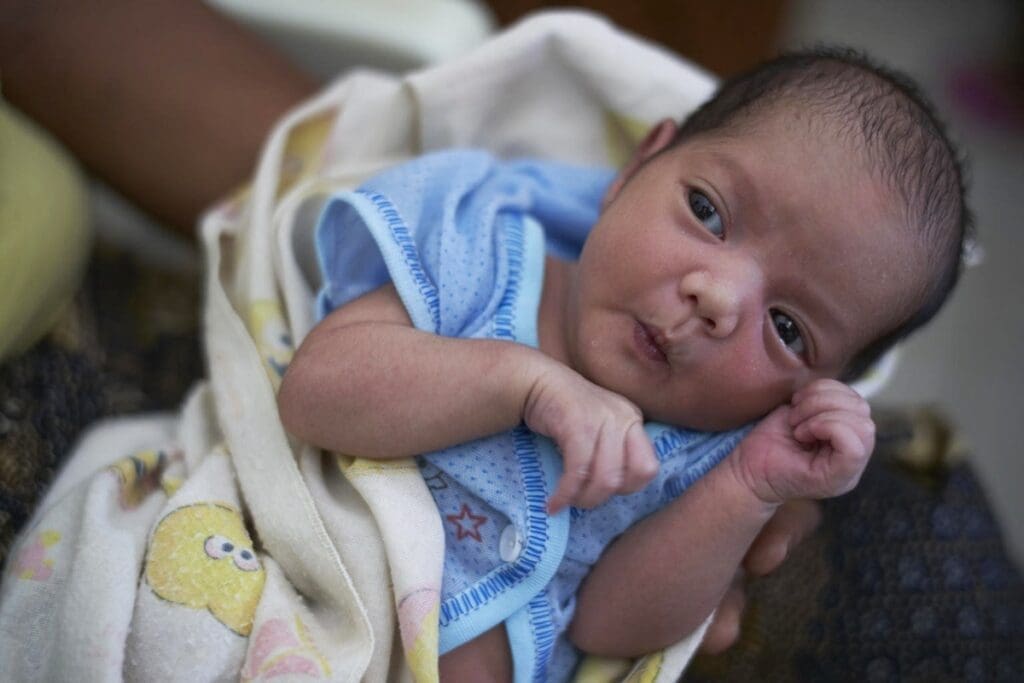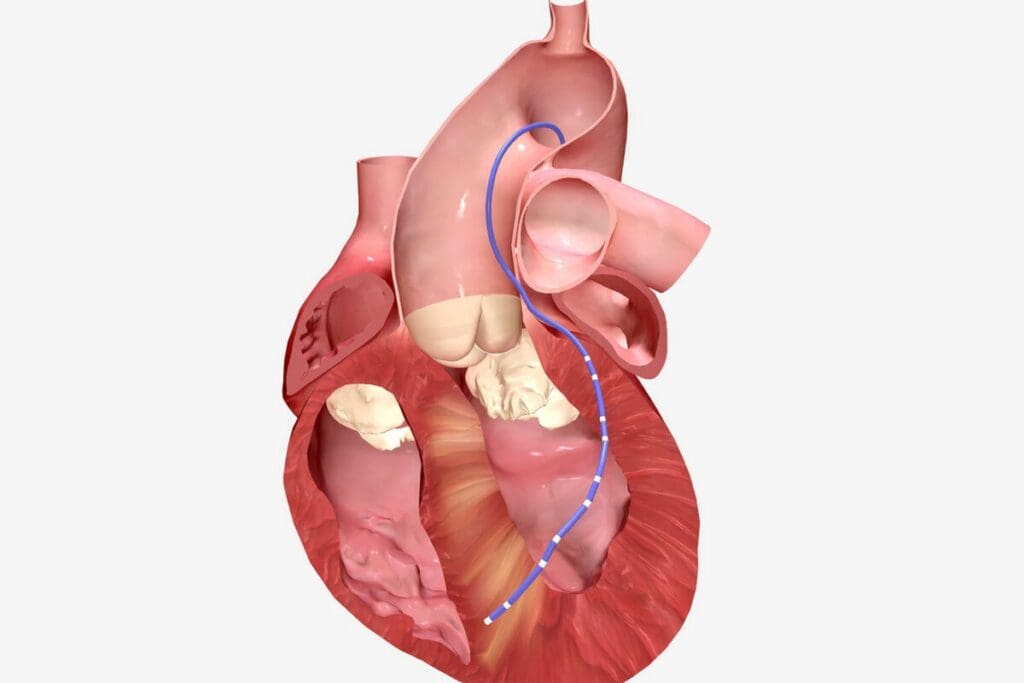Last Updated on November 24, 2025 by

Every year, thousands of babies are born with congenital malformations that change their lives. It’s important to know about these common birth defects. This knowledge helps prevent them, diagnose them early, and treat them well. Explore the 5 Congenital Anomalies that are most commonly observed in newborns. Get essential information on these developmental issues.
We will look at the five most common congenital malformations. These include heart defects, neural tube defects like spina bifida, Down syndrome, cleft lip/palate, and limb malformations like clubfoot. Around 3–5% of pregnancies worldwide are affected by these issues.
We aim to give you a quick overview of what you’ll learn here. We want to empower you with knowledge about these important health issues.
Congenital anomalies are a big health issue worldwide, affecting millions of births. These major birth anomalies can deeply affect the lives of those born with them and their families.
In the United States, about 1 in 33 babies is born with a birth defect. Globally, these anomalies put a big strain on healthcare systems.

Things that increase the risk of congenital anomalies include genetics, environmental factors, and demographics like age and ethnicity. Gender and ethnicity can also play a role in who gets certain anomalies. This shows why we need specific ways to prevent them.
It’s key to understand these developmental abnormalities to find ways to lessen their effects.
Congenital heart defects are the most common structural birth defects. They affect many families around the world. These defects happen when the heart or blood vessels don’t form right before birth. They occur in about 1 in 1,712 births.

Congenital heart defects can be different in how they affect the heart. Some common ones are septal defects, where there’s a hole in the heart’s chambers. Others are obstructive defects, which block or narrow the heart’s valves or blood vessels.
There are also cyanotic heart defects, which lead to low oxygen in the blood. And patent ductus arteriosus, where a blood vessel used in fetal life doesn’t close after birth.
Congenital heart defects are common, with many factors affecting their occurrence. Health issues in the mother, like diabetes, and certain environmental exposures during pregnancy can raise the risk. Genetics also play a big role in whether a child might have these defects.
It’s important to catch congenital heart defects early for the best treatment. Thanks to new medical technology, many defects are found during pregnancy. Treatment options depend on the defect’s severity and may include surgery, medication, or just watching the condition closely.
Getting the right treatment quickly can greatly improve a child’s chances of a good outcome.
Neural tube defects are serious issues that affect how a baby develops. These problems happen when the neural tube, which forms the brain and spine, doesn’t close properly. This can cause different problems, based on how bad the defect is and where it is.
There are many types of neural tube defects, with spina bifida being one of the most common. Spina bifida happens when the spine doesn’t close fully, which can damage nerves and cause other issues. Other types include:
These conditions can affect people differently. Knowing about the different types helps with planning care and managing expectations.
Studies show that neural tube defects, like spina bifida, happen more in females. Also, some ethnic groups have a higher chance of getting NTDs. Knowing this helps in making better prevention plans and support.
“The prevalence of neural tube defects varies significantly across different populations, highlighting the need for tailored public health strategies”, studies show.
To prevent neural tube defects, making dietary changes and sometimes taking medical steps are needed. Folic acid supplementation is known to help a lot by lowering the risk of NTDs if taken early in pregnancy. To manage these defects, surgery might be needed, along with ongoing care for related health problems.
We stress the value of prenatal care and teaching expectant parents about prevention. By knowing the risks and taking action early, we can lower the number and impact of neural tube defects.
Down syndrome is a leading cause of genetic conditions in infants. It affects about 1 in 700 newborns. This makes it a big issue for healthcare providers and families.
Down syndrome is mainly caused by an extra chromosome 21, known as trisomy 21. This happens during cell division. It leads to the typical features and developmental problems of Down syndrome.
Knowing the chromosomal cause is key for genetic counselling and planning families.
The extra chromosome 21 impacts many body systems. This causes the symptoms and issues seen in Down syndrome. Ongoing research helps us understand and treat this condition better.
The risk of Down syndrome goes up with the mother’s age after 35. This is because older women are more likely to have chromosomal problems during egg cell division. Healthcare providers look at this when checking for genetic risks in infants.
The link between older mothers and Down syndrome is clear. This info is important for counselling and managing pregnancies in older women.
Screening for Down syndrome uses ultrasound and blood tests during pregnancy. Tests like amniocentesis and chorionic villus sampling can confirm it. Early detection is key to family preparation and support.
Support for Down syndrome includes medical care, education, and social services. A strong support system is vital for improving life quality for those with Down syndrome and their families.
Orofacial and limb malformations are common birth defects. They can greatly affect a person’s life. We will look at cleft lip and palate, clubfoot, and the surgery options.
Cleft lip and palate happen in about 1 in 1,032 births. It’s when the lip or palate doesn’t form correctly during pregnancy. This can make it hard to speak, eat, and live well.
Early treatment is key for cleft lip and palate. We offer full care, including surgery, speech therapy, and orthodontics. This helps with all parts of the condition.
Clubfoot, or talipes equinovarus, is a common limb defect. It affects the foot and ankle. Other limb issues vary in how they affect people, needing a team effort to manage.
Quick diagnosis and treatment are vital for clubfoot and other limb issues. We stress the need for early action to better lives of those affected.
Surgery is a big part of treating orofacial and limb malformations. New surgical methods have made treatments more effective. We focus on specialized surgical care for the best results.
Surgery for these conditions often leads to good outcomes. Many people see big improvements. We support patients and their families throughout the whole treatment.
It’s key to know about common birth defects and congenital heart defects to help care for them well. At LIV Hospital, we aim to give top-notch healthcare. We also offer support and guidance for international patients, sticking to our mission of using the latest medical knowledge.
We’ve talked about how important congenital heart defects are. Early diagnosis and treatment are vital. By understanding these issues worldwide, we can help improve the lives of those affected and their families.
We keep pushing forward in medical technology and care. Our team is ready to tackle complex cases. We make sure patients get the best treatment for birth defects and other congenital issues.
The top five congenital anomalies include heart defects, neural tube defects like spina bifida, Down syndrome, cleft lip/palate, and limb issues like clubfoot.
Worldwide, about 3–5% of pregnancies are affected by congenital anomalies.
Yes, some anomalies are more common in certain groups. For example, gender and ethnicity play a role, and older maternal age increases Down syndrome.
The causes of congenital heart defects are often unknown. But genetic conditions, family history, and environmental factors can raise the risk.
While not all neural tube defects can be prevented, taking folic acid before and during pregnancy can greatly reduce the risk.
Treatment for cleft lip and palate usually involves surgery. The goal is to improve appearance, speech, and oral health.
Clubfoot and other limb malformations are treated with a mix of non-surgical methods like casting and bracing. Surgery may also be needed.
Families with congenital anomalies can get help from genetic counselling, psychological support, and medical care tailored to their needs.
Subscribe to our e-newsletter to stay informed about the latest innovations in the world of health and exclusive offers!